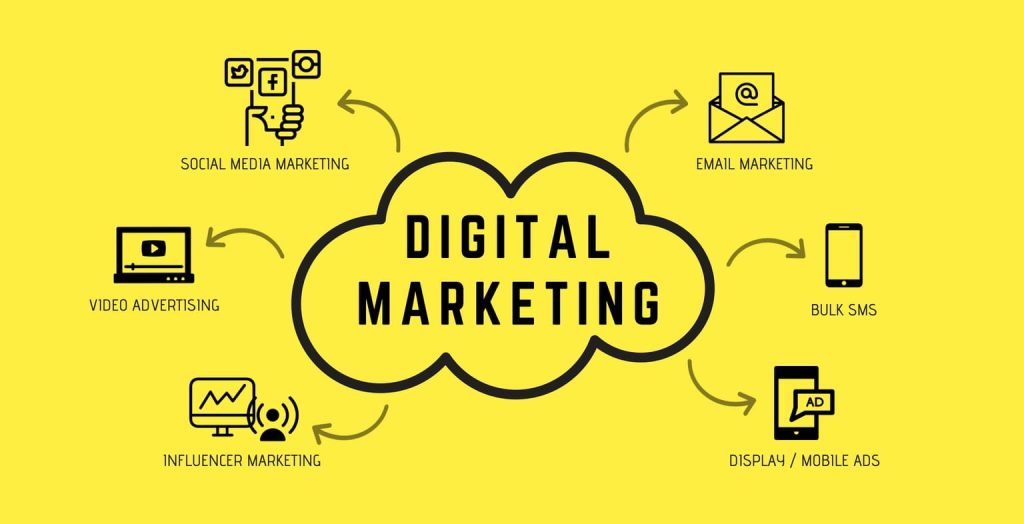
Drawing in leads is an overwhelming errand for any organization. Sorting out what direction to approach drawing in leads is a portion of the fight. Inbound advertising may be your next best step while promoting your B2B organization.
The web has turned into an expressway for correspondence. There are billions of roads for clients to investigate. Intelligent correspondence individuals hunger for most when they go on the web. They need to feel seen.
As an organization, you ought to take this feeling and go for it. You really want to make content that your clients truly care about. This will get them to your site significantly more rapidly than customary promoting.
With inbound marketing, you can attract potential customers who are already interested in your product or services. These prospects have a higher chance of converting than those who stumble upon a poorly placed ad.
Simply put, inbound marketing is creating content that your customers care about and letting them find you. Let’s dive into the areas you need to be focusing on and some steps you can take to create an inbound marketing strategy for your business.
Want to brush up on what goes into an inbound marketing strategy first? Here’s a quick video to give you the cliff notes from Inbound Explained:
Quick Takeaways:
- Establishing buyer personas to connect with your prospects will lead to more effective marketing
- Complete research with your specific buyer personas in mind
- Market directly to prospects in every stage of the buyers’ journey with purposeful content marketing
Establish Buyer Personas
But what does that mean? A buyer persona is a description of your ideal customer. You create a buyer persona using existing customer data, industry research and daily observations.
Furthermore, your buyer persona should explain what drives your customers to use your product or service. These observations can help inform future strategies.

Image Source: AWeber
More simply put, buyer personas are an informed explanation of who you think your target audience should be. This is who you create content for.
This may be the most reliable way to qualify a lead. Targeting anyone outside of this definition is a waste of time.
Research SEO Rankings

Source: FinancesOnline
Keyword research is how you’ll know what your target audience is searching for. This is what you need to write about!
Keywords drive your content because the higher you rank with keywords, the closer to the top you are on Google’s search results. Seeing how your search rankings are performing is important to a healthy content marketing strategy. To be honest, when was the last time you clicked the fifth link down?
Organic search rankings are even better than paid advertising. With paid ads, the benefits stop with the buck. When your advertisement budget runs dry, there’s no progress left to show for it. With organic rankings, you build an owned asset that will continue to benefit your website in the long run. Prioritizing organic rankings is simply more cost-effective.
How exactly do you decide what keywords to use and what content to write? Sites like SEMrush and Ahrefs grant valuable insight into keyword traffic, giving you the right knowledge to craft your content calendar.
Outline Your Content
The next step is planning out content for your website based on your SEO research. The key to a successful inbound marketing strategy is to write content for every stage of the buyer’s journey.
Top-of-the-funnel prospects who are just beginning their research will be looking for general information on your product or service. The further you move down the funnel, the more specific you’ll want to get. Make sure you have something for everybody, even if the top of the funnel might seem elementary to you. You are the expert here. If everyone knew everything you do, you wouldn’t have a business!
For example, let’s say your company sells stock trading advice. Create content focused on keywords identified in your research that your target audience is searching for, like stocks or best investments right now. Write articles like:
10 Market Trends to Watch Out for in 2022
Top Investment Consultants in (State)
Richest Investors Right Now
When you answer prospective clients burning questions, you lead them right to your company page where they realize, hey! These people know what they’re talking about, and they do stock market consulting!
Create Your Content
So, you know what to write about, but what exactly does good, quality content look like? Here are the basic rules.
- Word count matters
Google prioritizes articles within the 1,000-to-1,800-word range. Not enough or too many words will keep your masterpiece from ranking!
- Have an attention-grabbing meta description
Not only does Google pay attention to your meta description, but viewers do too! When your article comes up as a search result, the meta description is the second thing people see (after the title of course). The meta is a window into your content, so make it good!
- Call to Action (CTA)
A good CTA is how you connect with your audience. CTAs are the go-get-it portion of your article and are crucial to getting shares and engagement from your readers.
Include calls to action like starting a free trial, subscribing to an email list, or scheduling a free consultation. Don’t leave your readers hanging and give them something to do next.
Distribute Your Content
The next hurdle you face is content distribution. You gotta get in front of prospective eyes!
The first thing you should consider is how often you can post. The more often, the better. An ideal schedule of 1 article per day increases your blog’s effectiveness 4x compared to once per week. But content marketing can be time-consuming for any team. Take inventory of your content creators and their bandwidth. You might consider outsourcing your blog’s content creation for maximum effectiveness. P.S. most marketers do!

Image Source: Ring Central
Once you have a schedule planned, think of where your company lives online, and more importantly, where your target audience frequents. For example, if you’re a SaaS company marketing your latest AI software, you probably won’t be focusing on Instagram views. Your prospective clients are likely marketing directors or website designers who look to LinkedIn for new technological developments. Go to them! Publish your content in more than one place, every. single. time.
But wait, there’s more! Use your content in your email marketing. The more you publish quality content, the more likely people will care about what you say and look to you for industry info so, create a newsletter where prospects can sign up to hear more from you. Spoon feed them the content you’ve worked so hard on by sending it out in your newsletter.
By maximizing the reach of every piece of content you reach an exponentially higher number of prospects. Don’t forget that leads don’t convert after their first click. You often need 7 or more touchpoints to make an impression.
Maintain and Change as Necessary
Every industry is different. Don’t just guess what works best for your company, use your analytics to determine how successful your efforts are. How many people are seeing your content? What about clicks? How many are converting? These kinds of questions are what will show you the results (good and bad) of your inbound marketing strategy.
But how do you know if the customers you’re converting have been acquired through your inbound marketing strategy?
You can ask – Using surveys through your email marketing efforts can help you figure out just who has been using your product or service over a longer period of time. You can also find out how or why they converted. Having an open dialogue with customers also builds brand trust. People want to feel like your business cares about them.
Analytics – The backend of your website and content promotion tools can tell you a lot. You can see what part of your email newsletter viewers are clicking on. If you’re selling a tangible product, analytic tools can help pinpoint your repeat customers. Google Analytics shows you what content is performing best. Seek out the information that can better help direct your marketing efforts.
Test, test, test – The best way to know if something is working — run tests. Automation tools are the future of testing. You can run A/B tests on any variable you’d like. You can change the CTA in your newsletter, move the layout of your services page, and test different copies for your signup window. Then study the results to optimize your inbound strategy.



